
I hope you enjoy reading this blog post.
James Breese, Cricket Matters FounderIf you need my help with cricket coaching, strength and conditioning, injury rehab, or nutrition, click here.
When cricketers are in pain, SFMA helps identify the cause.
Fast bowlers’ backs. Batters’ groins. Keepers’ knees. Cricket is brutal on the body, and the problem isn’t just where it hurts — it’s why. Too often, players chase symptoms, rest for a bit, then break down again.
That’s where the Selective Functional Movement Assessment (SFMA) comes in. Put simply, it’s a movement assessment designed for athletes with pain. Instead of guessing, it examines how you move, breaks down patterns, and reveals whether the real issue lies in mobility, stability, or compensation elsewhere.
When cricket hurts, SFMA helps find out why.
In this blog, we’ll break down what SFMA is, how it works, how it differs from FMS, the top-tier patterns it uses, and — most importantly — how we apply it in cricket to keep players training and playing without repeat breakdowns.
At Cricket Matters, SFMA is part of every Performance Analysis when pain shows up. And if a player comes to us because of pain, it’s the framework we use to spot the real driver and build a roadmap back to pain-free cricket.
Table of Contents
FMS vs SFMA — What’s the Difference?
The two systems work hand in hand, but they’re not the same tool.
FMS is for athletes who are pain-free. It’s a simple screen of seven movements, scored out of 21, that shows how cleanly you move and where you might be compensating. Think of it as a fitness MOT — it tells you what’s running smoothly and what might need tuning.
SFMA is for athletes with pain. Instead of numbers, it classifies each movement into four categories:
- Functional, Non-Painful (FN)
- Functional, Painful (FP)
- Dysfunctional, Non-Painful (DN)
- Dysfunctional, Painful (DP)
That classification tells us whether the issue is a mobility problem, a stability problem, or a painful dysfunction that needs attention. In plain English: SFMA is the diagnostic test drive when the warning lights are flashing.
Cricket example: A bowler comes in with back pain. An FMS might show an asymmetry in the squat pattern. Useful, but broad. Run the same bowler through SFMA, and you might discover the lumbar pain is actually being driven by stiff thoracic rotation or poor hip control. That’s the power of SFMA — it doesn’t stop at “you move poorly,” it shows you why.
SFMA is the diagnostic test drive when the warning lights are flashing.
How an SFMA Session Runs
At Cricket Matters, we use SFMA when pain shows up — either because an athlete walks in with a problem, or because their FMS screen flagged something we need to dig deeper into. Where FMS gives us a baseline, SFMA tells us why the body is breaking down.
The session always starts at the top and works down through the body. The “top-tier patterns” cover the big movements: neck mobility, shoulder reach, spine flexion and rotation, single-leg balance, and a deep squat with arms by your side. These aren’t fitness tests — they’re movement checks. The goal is to see whether you can move cleanly, whether you compensate, and whether pain shows up along the way.
Each pattern is scored with a simple system:
- FN – Functional, Non-painful
- FP – Functional, Painful
- DN – Dysfunctional, Non-painful
- DP – Dysfunctional, Painful
Think of it like a traffic light. Green (DN) means you’ve found the weak link that needs fixing. Yellow (FP/DP) means pain is present, so it gets noted but treated later. Red (acute pain) has to be cleared first before anything else.
There are a few ground rules. No warm-ups. No shoes. Simple demonstrations only. The point is to see how you move, not how you perform after loosening up.
And here’s the crucial part: every screen gets re-tested. If we intervene — say, a thoracic mobility drill or hip activation — we check again immediately. That way we know whether the change worked, rather than guessing.
Take a fast bowler with low-back pain. FMS might show a poor deep squat or lunge. SFMA lets us dig deeper and discover the real driver — often stiff thoracic rotation forcing the lumbar spine to compensate. Fix the right link, and the back pain starts to ease. Potentially.
The Top-Tier SFMA Patterns
The SFMA starts with five “top-tier” patterns. These are big-picture movement checks. They don’t measure strength or fitness — they simply reveal whether you can move cleanly, whether compensations show up, and whether pain is present.
Cervical Spine (Neck)
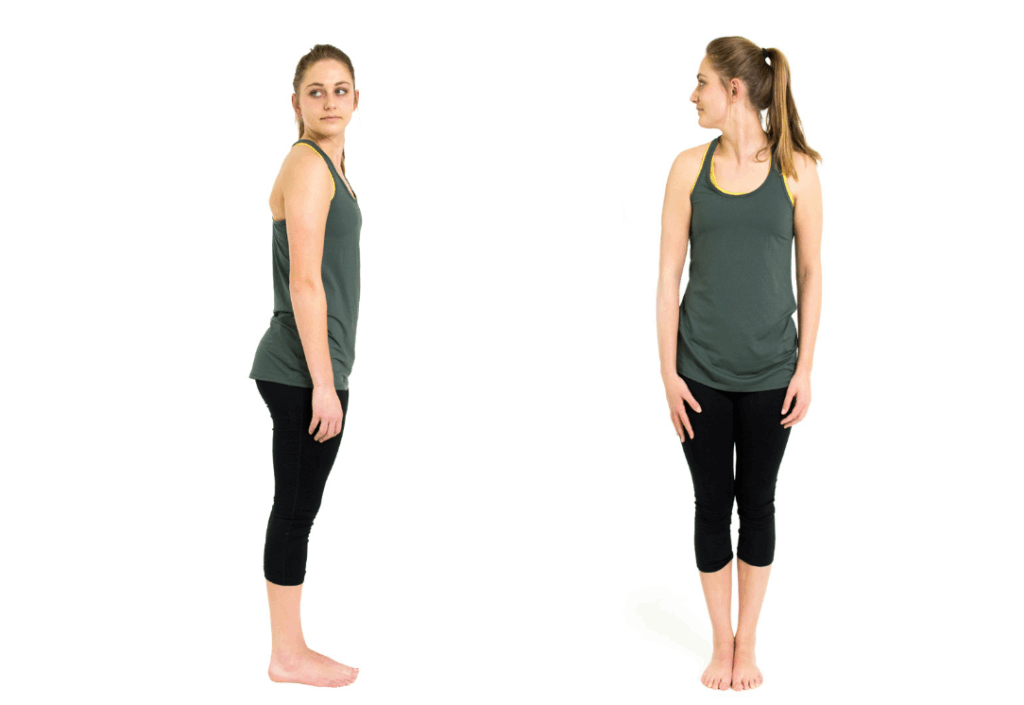
Assesses flexion, extension, and rotation of the neck. This shows whether the cervical spine can move fully and symmetrically without pain.
Upper Extremity (Shoulders)

Two patterns are tested: medial rotation with extension, and lateral rotation with flexion. Together, they show whether the shoulders have full mobility and control through combined motions.
Multi-Segmental Movements (Spine)
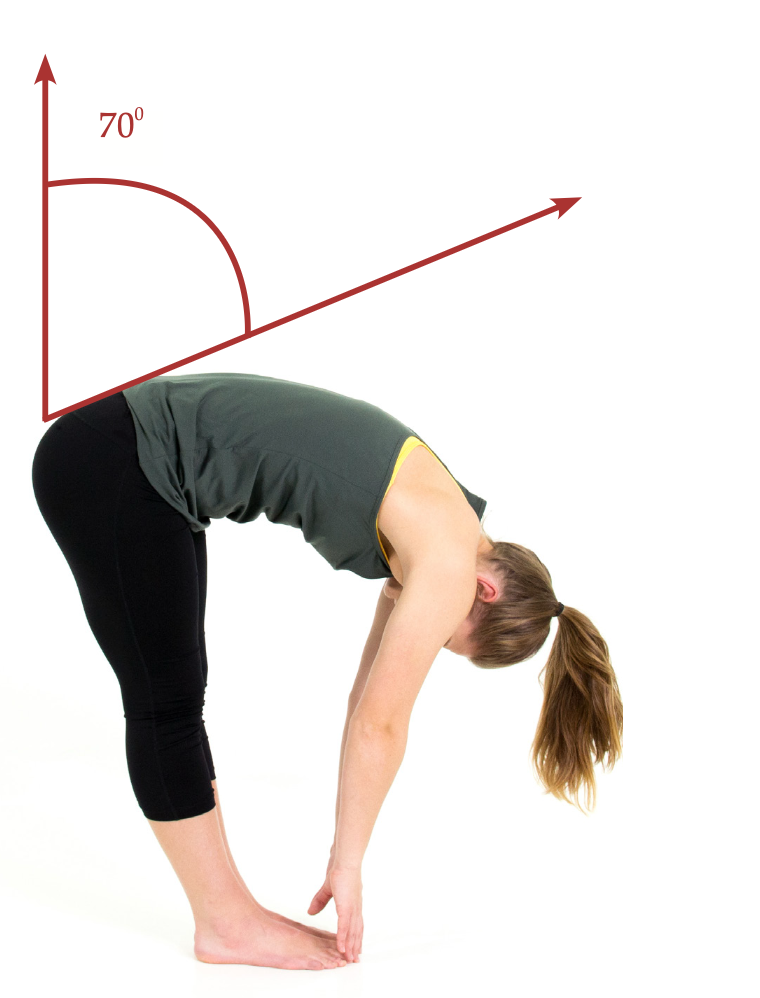
Checks flexion, extension, and rotation of the spine as a whole. These patterns reveal whether the trunk can move smoothly in large ranges or whether restrictions or compensations occur.
Single-Leg Stance
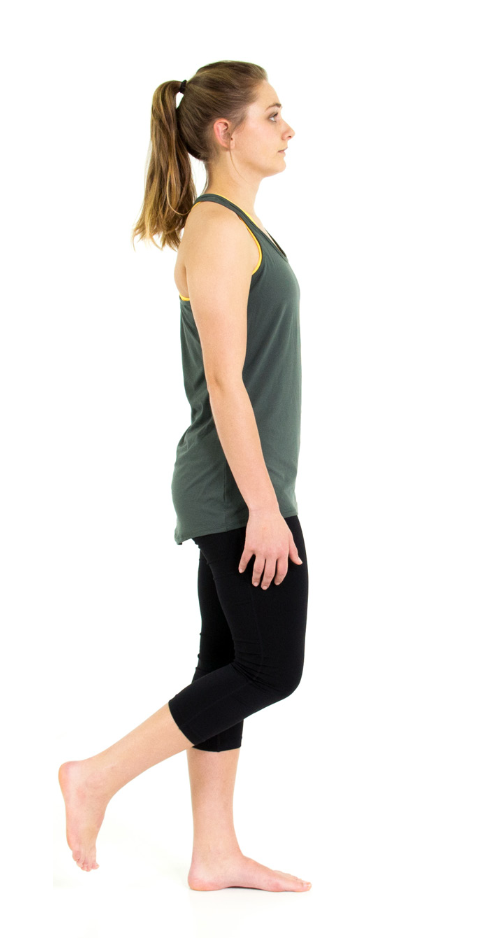
Assesses balance and control when standing on one leg. This test shows whether the body can maintain upright posture without wobbling, shifting, or losing alignment.
Arms-Down Deep Squat
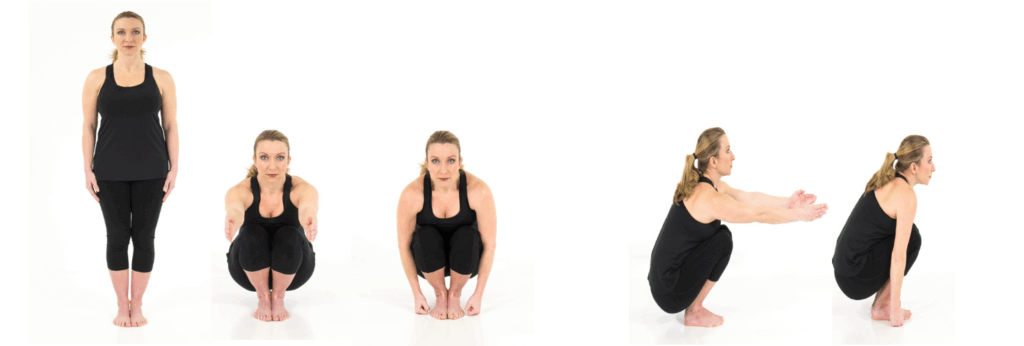
Evaluates total-body mobility and coordination. With arms at the sides, you squat as low as possible — this reveals how well the ankles, knees, hips, and spine work together.
SFMA Breakouts — Finding the True Cause
The power of SFMA is in the “breakouts.” Once a top-tier pattern shows a problem, we don’t stop there — we break the movement down piece by piece to find out why.
The process is simple but systematic:
- Active vs. passive: Can you move it yourself, and does it change when we move it for you?
- Isolate body parts: Take out the ankles, then the hips, then the spine, until the weak link shows up.
- Mobility vs. stability: If range is limited both actively and passively, it’s a mobility dysfunction (MD) — a joint, soft tissue, or mobility issue. If range is fine passively but breaks down when you move it actively, it’s a stability/motor control dysfunction (SMCD) — a control or coordination problem.
In cricket, this is where the system really earns its value:
- A fast bowler with low-back pain might look like a lumbar issue, but the breakout shows passive hip internal rotation is limited — the hips are stiff, and the back is compensating.
- A batter with groin pain might have good passive hip rotation, but when asked to rotate actively under load, the pattern fails — pointing to a stability/control problem, not a pure mobility issue.
The key message: pain is often just the symptom. SFMA helps us find the true driver, whether it’s stiffness, weakness, or poor coordination — so we don’t waste time treating the wrong thing.
Key SFMA Concepts That Matter in Cricket
Three principles underpin how we use SFMA:
- Regional interdependence — pain often comes from somewhere else.
- Mobility before control — earn range, then stabilise it.
- Rebuild in sequence — restore patterns the way the body first learned them.
In practice, this means a sore shoulder may actually be a thoracic spine issue. Low-back pain in bowlers often comes from tight hips. That’s regional interdependence — one joint failing because another isn’t pulling its weight.
Mobility always comes first. You can’t stabilise what you can’t move. Bowlers who lack hip or thoracic rotation simply load their lumbar spine harder, and it’s no surprise stress fractures follow.
And when pain strips away clean movement, we rebuild step by step: breathe, roll, crawl, stand. It looks simple, but it’s how the nervous system relearns control.
Why does this matter in cricket? Because the game is brutally repetitive. Bowlers repeat the same action hundreds of times. Batters rotate through hips and groins all season. Keepers squat for hours. Poor movement doesn’t just look awkward — it breaks down under load. Compensation always collects a price.
Who Should Take an SFMA Test?

The SFMA was never built for one narrow group. Since its creation, it’s been used across elite sport, the military, firefighters, and everyday athletes — anyone who needs to move and perform despite pain.
Unlike the FMS, which screens pain-free athletes, SFMA is specifically for players already dealing with discomfort.
In cricket, that means three main groups benefit most:
- Juniors (around 14+)
We generally begin screening from this age. Below that, younger players often don’t have the motor control or body awareness to complete every pattern cleanly, so simpler movement screens are better. From mid-teens onwards, SFMA helps spot red flags early — before workload and repetition create chronic problems. - Senior players
As the years add up, mobility declines and compensations creep in. An SFMA highlights where movement is breaking down, guiding targeted maintenance that keeps experienced players durable and extending careers. - Return-to-play after injury
Essential. Clearing pain is not the same as being ready to play. The SFMA shows whether you can move well enough — not just pain-free — to handle bowling, batting, and fielding demands again.
Bottom line: if you’re a cricketer dealing with pain, SFMA gives the roadmap. It’s not about age — it’s about need.
What Conditions Does SFMA Help With?
The SFMA isn’t about slapping a medical label on an injury — it’s about finding the functional cause behind the pain. Where a scan or X-ray shows the structure, the SFMA shows the function. It answers the “why” behind the breakdown: is it mobility loss, poor stability, or a compensation hiding somewhere else?
In cricket, that makes it invaluable for recurring problems:
- Low back pain in fast bowlers → often linked to stiff hips or limited thoracic rotation.
- Chronic groin/adductor pain in batters → may be more about stability under load than pure mobility loss.
- Shoulder overload in throwers and bowlers → cuff irritation that traces back to poor scapular control or thoracic stiffness.
- Knee pain in keepers and all-rounders → patellar or quad tendon pain aggravated by restricted ankle mobility or weak hips.
What SFMA gives isn’t a diagnosis in the medical sense — it’s a functional diagnosis. A clear map of whether the problem is mobility, stability, or motor control. That clarity guides smarter treatment, sharper training, and ultimately a safer return to play.

Have You Downloaded Our FREE 7-Day Gym Workout Plan?
Grab your complete step-by-step 7-day gym workout plan for cricketers today. There will be no more Guesswork. Just follow the plan and get results.
How Long Does an SFMA Assessment Take?
An SFMA isn’t a quick box-tick — it’s a deep dive into how you move when pain is in the picture. A full assessment typically runs 45–90 minutes, depending on how many breakouts are needed.
- Initial session: Always starts with the top-tier patterns. If pain or dysfunction shows up, we drill deeper with breakouts until the real driver is clear. You leave with a plan, not just a score.
- Follow-ups and re-tests: Much shorter. These are used to check whether the intervention worked, retest the pattern, and adjust the plan.
Think of the first assessment as the map, and the re-tests as checkpoints along the way — making sure you’re not just out of pain, but back to moving the way cricket demands.
How We Use SFMA in Cricket at Cricket Matters
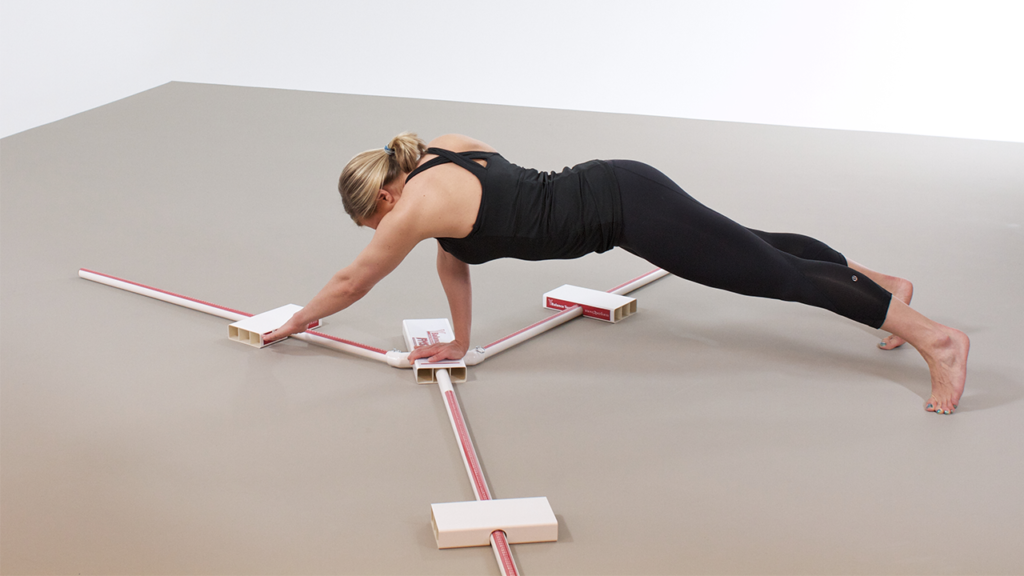
At Cricket Matters, we never guess — we assess. That’s why SFMA always runs alongside FMS. If a player moves without pain, we begin with the FMS to establish their baseline. If pain shows up, SFMA kicks in to uncover what’s really driving it.
The system’s strength lies in its consistency. Every coach and therapist here is trained in both FMS and SFMA. That means no mixed messages, no wasted weeks, and no confusion about what’s causing the problem. Everyone speaks the same language and works off the same roadmap.
Here’s how it plays out:
- A bowler comes in with low-back pain.
- SFMA flags thoracic stiffness as the root driver.
- FMS shows poor squat mobility, confirming limited movement patterns elsewhere.
- The strength coach designs a load plan.
- The physio restores thoracic mobility.
- The skills coach adjusts the bowling action to reduce strain.
That’s the value of a system. SFMA isn’t just a test — it’s the framework that links physio, strength, and skill coaching into one plan. And in cricket, that’s how you stop chasing symptoms and start building results that last.
The players who last aren’t the ones who push through — they’re the ones who rebuild and adjust.
Final Word: SFMA Assess, Don’t Guess
The Selective Functional Movement Assessment isn’t magic. It won’t add runs to your total or pace to your bowling overnight. What it does is more valuable: it gives us a framework to uncover what’s really driving pain.
When pain is present, technique changes. Bowlers collapse at the crease. Batters keep falling over to the offside. Keepers can’t stay low. These compensations keep you on the field in the short term but load the wrong tissues in the long run. That’s why the same problems keep coming back.
The players who last aren’t the ones who “push through.” They’re the ones who screen, rebuild, and adjust. They spot the weak link, fix it, and get back to moving the way they should.
If you’ve got a niggle that won’t shift, or pain that keeps creeping into your game, SFMA could be the missing link.
Book a Performance Analysis or an Injury Assessment with one of our therapists at Cricket Matters, and let’s find out what’s really going on.
Further Reading
Evidence Corner: What the Research Says
The Selective Functional Movement Assessment (SFMA) is best viewed as a structured movement-classification system rather than a diagnostic tool. Research shows it provides a reliable way to differentiate between painful and non-painful movement restrictions, guiding clinicians toward targeted follow-up testing and treatment. In cricket and other rotational sports, SFMA principles help identify dysfunctional patterns that may contribute to injury or reduced performance.
What It Does Well
- The SFMA demonstrates moderate to good inter- and intra-rater reliability, supporting its use to structure clinical reasoning when athletes present with pain or movement restrictions.
- It helps prioritise where to test next by identifying non-optimal patterns that warrant mobility, motor-control, or strength assessments.
- In cricket settings, movement screening (including FMS and Y-Balance derivatives) has been linked to intrinsic injury risk factors, such as limited trunk rotation or poor hip stability.
- Structured corrective programs built on SFMA findings can enhance movement efficiency and control, supporting long-term athletic development.
Where It Falls Short
- Screening is not diagnosis: The SFMA organises problems but does not identify tissue-level pathology; clinical examination remains essential.
- Prediction limits: Movement screens alone show limited accuracy for predicting injuries, especially in elite or contact sports. They are most effective as part of a broader monitoring system.
- Cricket-specific data are still limited for SFMA, with most evidence extrapolated from general athletic or rehabilitation populations.
What This Means for Cricketers
Use the SFMA as your movement baseline — a way to identify and fix weak links before they turn into injuries. It helps you understand which movements cause pain or restriction so you can focus your recovery and training on what really matters. By improving how you move, you’ll improve how you perform — whether that’s bowling, batting, or fielding.
Key Research References
- Aghi, A., D. Setia, M. Bansal, et al. (2023). Selective Functional Movement Assessment (SFMA): Intra-Rater and Inter-Rater Reliability. Journal of Bodywork & Movement Therapies. https://pmc.ncbi.nlm.nih.gov/articles/PMC9915240/
- Harper, B., K. Uhl, and L. C. McPherson. (2023). Novice Inter-Rater Reliability on the Selective Functional Movement Assessment (SFMA) After a 4-Hour Training Session. International Journal of Sports Physical Therapy. https://ijspt.scholasticahq.com/article/82173
- Martin, C., J. Olivier, and S. Benjamin. (2017). The Functional Movement Screen in the Prediction of Injury in Adolescent Cricket Pace Bowlers: An Observational Study. Journal of Sport Rehabilitation, 26(5), 386–395.
- Olivier, B., D. Taljaard, S. Burger, et al. (2018). Musculoskeletal Predictors of Non-Contact Injury in Cricketers. Physical Therapy in Sport. https://www.sciencedirect.com/science/article/abs/pii/S1466853X1830021X
- Chimera, N. J., J. A. Smith, J. R. Warren, and H. L. Laskowski. (2016). Use of Clinical Movement Screening Tests to Predict Injury in Sport. Journal of Athletic Training, 51(9), 819–825.
- Alkhathami, K. M., M. Alnahdi, and A. A. Alshehri. (2024). Comparing the Scores of the Functional Movement Screen in Individuals With Low Back Pain Versus Healthy Individuals: A Systematic Review and Meta-Analysis. International Journal of Sports Physical Therapy. https://ijspt.scholasticahq.com/article/120199
- Steele, C., K. Denegar, and R. D. Uhl. (2024). Intrinsic and Extrinsic Variables Impacting Upper-Quarter Y-Balance Test Performance: Implications for Injury Risk and Return to Sport. Physical Therapy in Sport. https://www.sciencedirect.com/science/article/pii/S1360859224001001
Bottom line for cricketers:
Use the SFMA as a structured movement baseline to uncover hidden limitations and guide corrective strategies if you’re in pain — but pair it with strength and skill work for the best on-field results.

Have You Downloaded Our FREE 7-Day Gym Workout Plan?
Grab your complete step-by-step 7-day gym workout plan for cricketers today. There will be no more Guesswork. Just follow the plan and get results.
FAQ
What Is the SFMA Assessment in Cricket?
The Selective Functional Movement Assessment (SFMA) is a clinical movement screen used when a cricketer presents with pain. Unlike general fitness tests, it doesn’t measure performance — it breaks down fundamental movement patterns to identify whether the issue is caused by mobility restrictions, poor stability, or compensations elsewhere in the body. For example, a fast bowler with lumbar pain might actually have stiff hips or limited thoracic rotation. The SFMA highlights these relationships, helping clinicians understand not just where the pain is, but why it occurs.
What Is the Difference Between FMS and SFMA
The Functional Movement Screen (FMS) and the Selective Functional Movement Assessment (SFMA) are related but serve different purposes. The FMS is a baseline screening tool for athletes who are not in pain. It uses seven tests, scored on a 0–3 scale, to highlight movement quality and asymmetry. The SFMA, on the other hand, is used when pain is present. Instead of scores, it classifies movements as functional or dysfunctional, painful or non-painful. In cricket terms, an FMS might show that a batter squats asymmetrically, while an SFMA can dig deeper to reveal whether that breakdown is due to hip mobility loss, poor core control, or pain-driven compensation.
How Long Does an SFMA Assessment Take?
An SFMA assessment typically lasts between 45 and 90 minutes, depending on the complexity of findings. The initial session usually involves the full top-tier screen (neck, shoulder, spine, balance, and squat patterns), followed by “breakouts” to isolate the cause of any dysfunctional or painful movements. These breakouts may look at active versus passive range, stability under load, and regional mobility. Follow-up sessions are shorter, as they focus on retesting key patterns and checking whether interventions have improved movement quality.
What Conditions Does SFMA Help With in Cricket?
The SFMA is not a medical diagnosis tool but a functional assessment that identifies movement dysfunctions linked to pain. In cricket, it is commonly used for low-back pain in fast bowlers, chronic groin pain in batters, shoulder overload from repetitive bowling or throwing, and knee pain in keepers or all-rounders. The assessment highlights whether the primary issue is a mobility restriction (such as stiff hips or ankles) or a stability/motor control problem (such as poor scapular control or weak core sequencing). This distinction helps clinicians design more targeted rehab and return-to-play strategies.
Who Should Take an SFMA Test?
The SFMA is designed for any athlete or individual experiencing pain during movement, and in cricket it is most useful for three groups. Junior players (around 14 and older) can benefit by spotting red flags before repetitive training loads create long-term problems. Senior cricketers use it to manage age-related mobility decline and compensations that build over years of play. Finally, it is a key checkpoint in return-to-play after injury, ensuring that an athlete’s movement quality is restored before resuming the demands of bowling, batting, or wicketkeeping. While originally developed for elite sport, military, and tactical populations, the SFMA has become widely applied in cricket as a structured framework for understanding pain-related movement issues.



